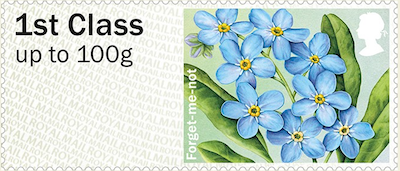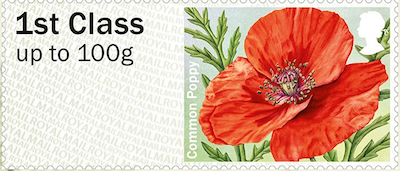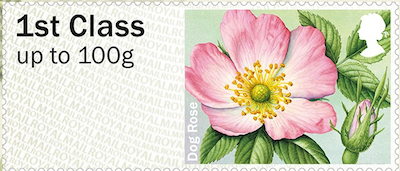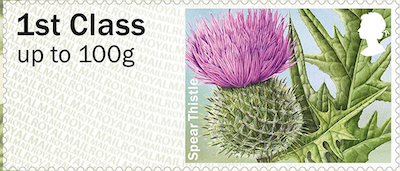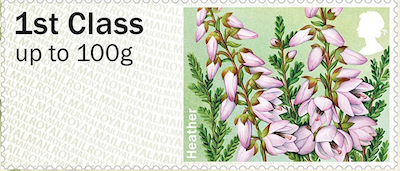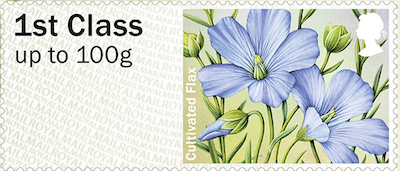Norvic Philatelics - GB New Stamps and Special Postmarks
Pictorial Faststamps: British Flora - Symbolic Flowers 17 September 2014
The second set of British Flora Post and Go
Faststamps depict Symbolic Flowers, those
with connections linked to folklore or history.
According to legend, the thistle was adopted as the national symbol of
Scotland after an attempted ambush by Norse invaders on a group of
sleeping Scots warriors: when one of the barefoot Norsemen trod on a
thistle, his cries woke the Scots, who duly thwarted the attack. The rose
became England’s national flower after Henry VII introduced the Tudor
rose, a combination of the red and white roses of the Houses of Lancaster
and York, to symbolise unity after the Wars of the Roses. Flax, the floral
symbol of Northern Ireland, honours the historical importance of the
nation’s linen industry. The poppy and the forget-me-not have both long
signified remembrance, with the latter particularly associated with love.
Wearing a sprig of heather is still said to bring good luck.
Pictorial Post & Go stamps appear in machines in UK Post Offices for
defined periods of time in the year and this series is intended to provide
attractive stamps that are appropriate for the season in which they are
issued.
There will be three sets of stamps this year. The first set in
February showed Spring
Blooms, and the third issue will show Winter Greenery.
Post & Go terminals allow customers to weigh their letters and packets,
pay for and print postage labels and stamps without the need to visit the
counter. The first Post & Go machine was trialled in The Galleries Post
Office® in Bristol in 2008. The labels will be used in Post & Go
machines at Post Offices around the country, and from new Royal Mail Series
II machines at Spring Stampex. The labels can be obtained with 6
different service indicators: 1st class up to 100g & 1st class Large up
to 100g, a dual-value Europe up to 20g/World up to 10g, Europe 60g,
Worldwide 20g, and Worldwide 60g. The stamps are dispensed singly or
in strips of up to 5 or 6 (depending on the machine) of the same value or
various values. On the new NCR Self-Service machines these stamps are
also dispensed for many different weights and services including Small
Parcels, Special Delivery, and International Tracked and Signed.
From top left: Forget-me-not,
Common Poppy, Dog Rose, Spear Thistle, Heather and Cultivated
Flax.
|
|
The stamps in detail
FORGET-ME-NOT
Forget-me-nots comprise a large family of plants, from the large, striking
water variety to the tiniest specialists of bare ground. All the flowers
have a visible white ‘eye’ in the middle, with the outer petals ranging in
colour from the palest to the richest blues.
COMMON POPPY *
This iconic plant with large red petals and a dark centre only grows in
disturbed ground, such as field margins and wasteland. The occasional
sighting of poppies blooming en masse is perhaps one of the most stunning
scenes in the British countryside. Since 1921 the Poppy has also been
the symbol of Remembrance for those who died not only in World War 1 but
other conflicts since.
DOG ROSE
This wildflower, the most widespread of the UK’s native roses,
adorns hedgerows, field banks and woodland edges with pink or white flowers
in mid-summer. Although often occurring as a small shrub, it can climb up
through the canopy reaching heights of over 15 metres. Associated
particularly as a symbol of England.
SPEAR THISTLE
One of the larger types of thistle found in the UK, with a purple flower
atop a swollen, spiny green base and spear-like tips on the leaves, it
typically occurs in damper ground. Its flowers provide a feast of nectar and
pollen for insects in late summer. Associated particularly with
Scotland.
HEATHER
Heather adorns heathlands and moors, and is one of the last plants of the
year to flower, providing abundant late summer forage to wild bees. Each
plant is covered in minute purple flowers, and when millions of these open
at once, entire landscapes are transformed. Although widespread
throughout the United Kingdom it is particularly associated with Scotland.

CULTIVATED FLAX
Grown for centuries and used in the making of cloth and oil, this type of
flax is often seen on banks where it has escaped from arable fields. A
delicate plant with five pale-blue petals and narrow pointed leaves, it
flowers from May to September. It can now be seen below many garden
bird feeders, and is a symbol of Northern Ireland.
The daffodil, symbolic of Wales, was included in the Spring
Blooms set.
* Stamps in the Poppy design will be reintroduced in a single-design roll on
21 October 2014 ahead of Remembrance Day, 11 November.
Technical details:
Designed by Kate Stephens and illustrated by Julia Trickey the six 56mm x
25mm stamps are printed in gravure by Walsall Security Printers, with two
phosphor bars. The stamps in the pack will have the service indicator
and other detail printed in gravure. All images are by kind
permission of Royal Mail, Copyright 2014. This website is copyright Norvic
Philatelics 2014.
Products issued
The labels will be used in Post & Go machines at Post Offices around
the country, and from the Royal Mail machines at Spring Stampex.
A mint set of 6 x 1st will also be available from Royal Mail's Tallents
House Bureau in a pack similar to a presentation pack. All values in
the pack are 1st Class with a philatelic branch code.
Royal Mail will again produce a First Day Cover and official First Day
Postmarks for these.
Special Postmarks
Postmarks available for the day of issue will be shown here These are
not to scale. These postmarks cannot be obtained after the date
of issue.
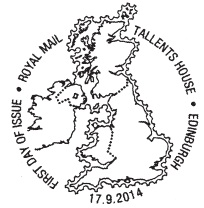
|
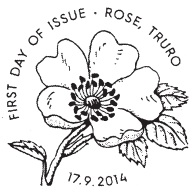
|
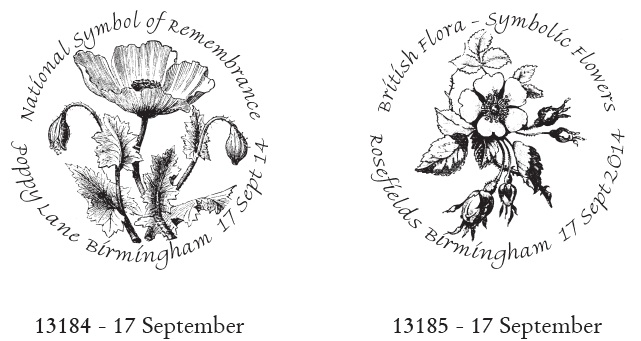
|

|
Ref FD1417TH
Philatelic Bureau Official Postmark illustrated with a map of the
British Isles |
Ref FD1417PL
Rose, Truro
|
Ref M13184 Poppy Lane,
Birmingham
Ref M13185 Rosefields Birmingham |
Ref L13179
Kensington Gardens, London |
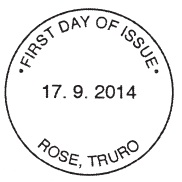
|
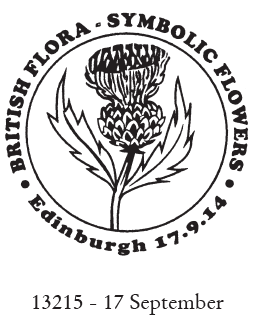
|
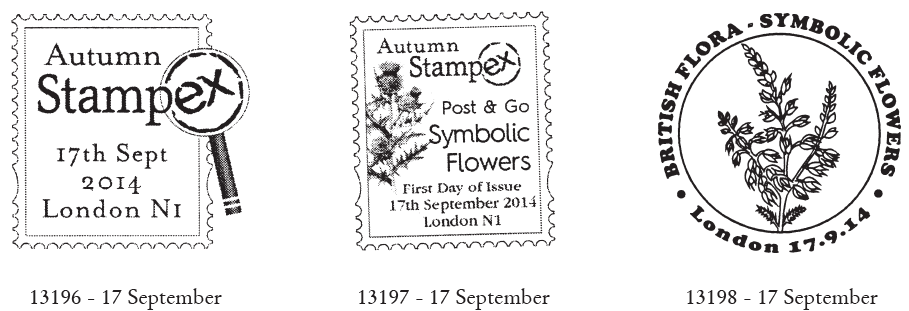
|
Ref FD1417NP
Rose, Truro
|
Ref S13215 Symbolic Flowers Edinburgh
|
L 13196 Generic Autumn Stampex
L
13197 Autumn Stampex Symbolic Flowers
postmark
first day postmark London N1 |
Ref L13198 Symbolic Flowers London
|
This page created 24 August 2014
If you wish to be told when this page is updated, please use the
ChangeDetection box at the top of this page.
If you have any questions, please email
us.
NB: all emails will be acknowledged in 1-2 days
unless we are away (see home page). If you do not receive an
acknowledgement please email us from a different address (eg hotmail,
gmail).
Instant
Printing Prices from Webmart
